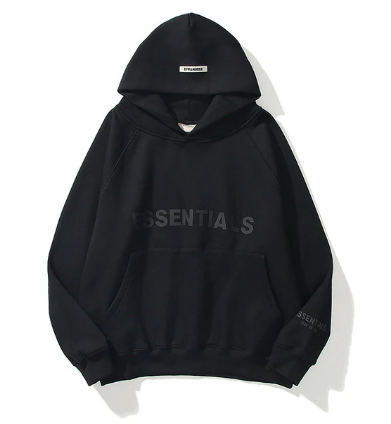When it comes to shipping shoes, one of the most crucial elements to consider is the shoe box dimensions. Whether you’re a retailer shipping a single pair or a wholesaler dealing with bulk orders, selecting the correct size for your shoe box is essential for ensuring safe delivery, reducing costs, and providing a positive customer experience. In this article, we will explore the standard shoebox size, the Nike shoebox dimensions, and the best shoe box dimensions for shipping to help you make an informed decision.
Understanding Shoe Box Dimensions for Shipping
Shipping shoes is not as simple as just throwing them into any box. The shoe box dimensions play a crucial role in determining the overall shipping cost, ensuring the shoes are protected during transit, and optimizing the space in your shipping containers. Using the correct shoe box size ensures that your products arrive in perfect condition, while also minimizing any extra shipping fees that may come from oversized boxes.
Standard Shoebox Size
The standard shoebox size typically refers to the dimensions most commonly used in the industry for packaging everyday footwear. These boxes are designed to fit a wide range of shoe types, from sneakers to formal shoes.
For most adult shoes, the standard shoebox size is approximately 12 inches long, 7.5 inches wide, and 5 inches high. These dimensions work well for most shoes, but it’s always important to consider the specific type of shoe you are shipping. For example, women’s shoe boxes are often slightly smaller, while men’s shoes may require boxes that are a bit larger.
Nike Shoebox Dimensions
Nike is one of the biggest names in footwear, and they have specific Nike shoebox dimensions that cater to the unique shapes and sizes of their shoes. The typical Nike shoebox size is around 13 inches long, 7.5 inches wide, and 5 inches high. This is slightly larger than the standard shoebox size, which helps accommodate the variety of shoes that Nike produces, including high-top sneakers and athletic shoes.
It is important to note that Nike’s packaging often includes more premium materials and design features, such as a branded box with a logo, which can affect the overall size and dimensions. These boxes are designed to not only protect the shoes but also create a memorable unboxing experience for customers.
If you’re shipping Nike shoes, or any other branded footwear, it’s critical to choose the right shoe box dimensions for shipping to avoid unnecessary damage to the shoes or the box itself. You don’t want the shoes to move around too much inside the box, as this could lead to scuffs, scratches, or other damage. On the other hand, a box that is too large may result in your shoes shifting too much during transit, leading to potential issues.
Shoe Box Dimensions for Shipping
When considering shoe box dimensions for shipping, it’s important to account for the extra protection the shoes need during transit. Shipping carriers like USPS, UPS, and FedEx have strict guidelines for the size and weight of packaging boxes, and choosing the correct box size helps you avoid unexpected fees.
The ideal shoe box dimensions for shipping should be snug but not too tight. The goal is to ensure that the shoes don’t move around too much within the box, but also that the box isn’t too small to cause stress on the shoes. Most shipping experts recommend that you add around 1 to 2 inches of extra space on each side of the shoes inside the box. This extra space allows for cushioning material such as tissue paper, bubble wrap, or packing peanuts, which will provide additional protection against impact during shipping.
How to Choose the Right Shoe Box Size for Shipping
Choosing the right shoe box dimensions for shipping can seem daunting, but it doesn’t have to be. Here are a few tips to help you make the right decision:
- Measure the shoes: Start by measuring the length, width, and height of the shoes you intend to ship. Be sure to account for any extra features, such as heels or embellishments, that could add to the overall size.
- Choose a box with a little extra room: As mentioned earlier, it’s important to allow for extra space inside the box. Too tight a fit may cause damage, while too much space can lead to unnecessary movement.
- Consider the type of shoes: Different types of shoes may require different box sizes. Sneakers, boots, and sandals all have unique shapes and sizes, so it’s important to select a box that accommodates your product well.
- Factor in protection: Consider the type of cushioning you’ll need to ensure your shoes arrive in perfect condition. Whether you use bubble wrap, foam inserts, or just tissue paper, extra protection can help prevent damage during shipping.
- Consult the shipping carrier’s size restrictions: Each shipping carrier has specific size limits for packages. Be sure to check with your carrier to ensure your box dimensions comply with their guidelines.
Conclusion
The shoe box dimensions you select for shipping play a significant role in the overall success of your delivery process. By choosing the correct shoebox size, whether it’s the Nike shoebox dimensions or a standard size, you can ensure your products reach their destination safely and securely. Additionally, selecting the right box size helps minimize shipping costs by avoiding excess packaging and wasted space.
When it comes to shoe box dimensions for shipping, it’s important to ensure that the box fits the shoes well, provides adequate protection, and complies with shipping carrier requirements. By following the tips in this guide, you can confidently ship your shoes, knowing they will arrive in perfect condition and delight your customers.





